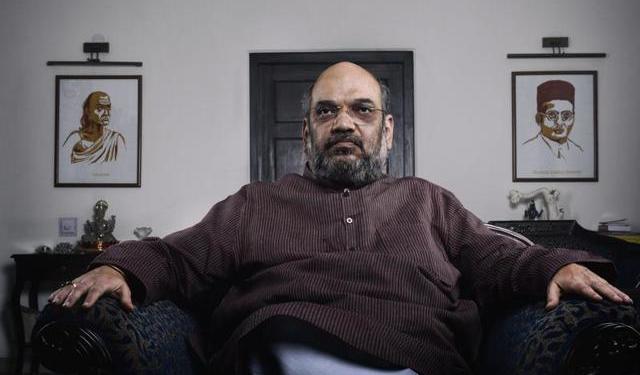Amit Shah, the man who led the BJP to gain unrivaled political power in the country is now the country’s Home Minister. One historical figure that inspires Shah most is Chanakya, the philosopher, teacher, economist, jurist and royal advisor who helped play the most important role in the building of the Mauryan Empire. Amit Shah has the photograph of Chanakya in his office on the right-hand side and nationalist icon V D Savarkar on the left-hand side.
At a rally in Pune on July 8, 2018, Shah had said that the country needed to adopt ‘Chanakya Neeti’ to make India stronger in every field. He also argued that the Modi government’s working doctrine comes from Chanakya. “Chanakya ended the concept of King as god and preached that ruler is the one who follows the constitution. When Modi talks of being a Pradhan Sevak, the spirit is the same,” said Amit Shah.
Chanakya helped to build the Maurya Empire, one of the greatest empires the world has ever seen. He was arguably the greatest thinker on political economy and national security. As the Home Minister of the country, Amit Shah is following teachings of the great philosopher to solve the ‘internal security’ problems of the country.
If a nation follows the doctrines of Chanakya, it could be called a Chankyan state. The idea of Chanakyan state argues for a limited intervention of the state in society with its role confined to areas like defense, internal security and establishing rule of law and monopoly over violence in its territory.
To solve the internal security problems, Chanakya advises policy of conciliation and coercion. “He (King) may employ the policy of conciliation with regard to those who keep the appearance of contentment, or who are naturally discontented or otherwise. Gifts may be given under the pretext of having been satisfied with a favoured man’s steadfastness… or under the plea of anxious care about his weal or woe,” wrote the great thinker.
Amit Shah did the same on the Jammu & Kashmir front and asked the administration to “Let an ordinary Kashmiri feel that it is his government and not of the elites.” The first legislation Amit Shah introduced in the Lok Sabha as Home Minister was Jammu and Kashmir Reservation (Amendment) Bill. This Bill has provisions for reservation to people living within 10km of International Border in educational institutions and government jobs. “This bill is not to please anyone but for those living near the International Border,” said Shah. So, here Amit Shah is using the policy of conciliation and trying to embrace the people of the state. The conciliation part of Chanakyan strategy was clearly visible in Amit Shah’s approach.
Chanakya is ruthless when it comes to coercive tactics to deal with internal threats and even supports ‘targeted killings’. He prescribed death as punishment for the leaders of the conspiracy. “Disaffection or disloyalty (viraga) can be got rid of by putting down the leaders; for in the absence of a leader or leaders, the people are easily governed (bhogya) and they will not take part in the intrigues of enemies,” wrote Chanakya in Arthashastra.
Shah is dealing with separatist leaders through coercion. “Yes, today there is a fear in their mind. It has to be there and it is only going to increase,” said Shah in parliament on separatist leaders. He also said that Article 370 is only “temporary” provision in the constitution. He also criticized the policy of providing ‘security’ to separatist leaders and informed the parliament that the government has reviewed the security of 2,000 persons and withdrew from 919 individuals.
“I wonder why the Jammu and Kashmir Liberation Front (JKLF) had not been banned so far. What liberation do they want and from whom? Why was an openly separatist name not banned? Why was Jamat-e-Islami not banned by previous governments?” Amit Shah asked in parliament. Following the Chanakayan model, Amit Shah has further focused on choking the funding sources of terrorists. The counter-terrorism operations will be in concurrence with the crackdown on separatist leaders who have been the source of funding for the terrorists. During his visit to Kashmir, Amit Shah further highlighted the need to go against these leaders.
Apart from dealing with Pakistan supported terrorism in the valley, the strategy of countering Maoist terror (which would fit the threat category of ‘internal originators and internal abettors’ according to Chanakya and is the most dangerous one which Chanakya terms as ‘fear from a lurking snake’), Amit Shah seems to be following the Chanakyan model. Chanakya’s strategy of dealing with such threats is targeting the leaders. In his first meeting with regard to Maoist problem, Amit Shah laid out the plans to seize the assets of known Maoist leaders and their abettors.
In the last month, it became very clear that Shah will follow the teachings of Chanakya in matters relating to the country’s internal security. Chanakya helped to build one of the greatest empires from ruins and Shah plans to do the same for India by using his principles and teachings.


































